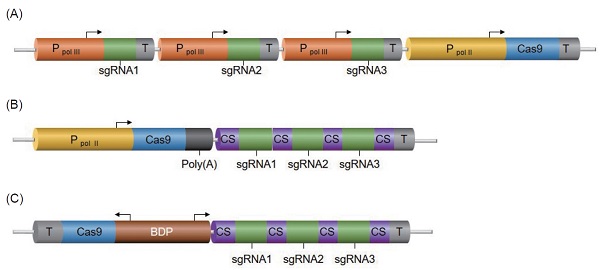All issues

Author:Yi-Wen Wang**, Han-Wei Chen**, Shuen-Chi You, Jau-Yueh Wang, and Da-Gin Lin*
Abstract:
Multiple gene editing is one of the highly efficient tools for novel precision breeding. Since two or more different DNA sites in the genome can be edited simultaneously, it is suitable for the exploration of important traits regulated by quantitative trait genes or homologous gene families. The systems of multiplex gene editing can be roughly divided into three modes: zinc finger nucleases (ZFNs), transcription activator-like effector nucleases (TALENs), and CRISPR/Cas. Among them, CRISPR/Cas has become the mainstream due to its simple operation, high editing efficiency, and low cost. Therefore, this article mainly discusses the advanced multiple gene editing system that was developed based on CRISPR/Cas. Furthermore, the subject will focus on the editing purpose, vector construction expression system, multiple gRNA expression methods, and successful examples in rice, wheat, corn, rape, tomato, potato and other food and economically important crops. We hope that this article can serve as a reference for researchers conducting related research.
Key words:Multiple gene editing, Precision breeding, Quantitative trait genes, Homologous genes
Download:![]() PDF Links
PDF Links
- 1. Using Digital Soil Mapping to Predict Soil Organic Carbon Stocks in Zhuoshui River Basin
- 2. Taxonomic Review of the Genus Asiophrida Medvedev, 1999 in Taiwan (Insecta: Coleoptera: Chrysomelidae: Galerucinae: Alticini), with Notes on Biology
- 3. Development of a Technique for Forecasting (or Pre-Detection) Anthracnose Disease Incidences of Green Mature Bagging Mango Fruits
 Submit your manuscript
Submit your manuscript
 Guide for authors
Guide for authors